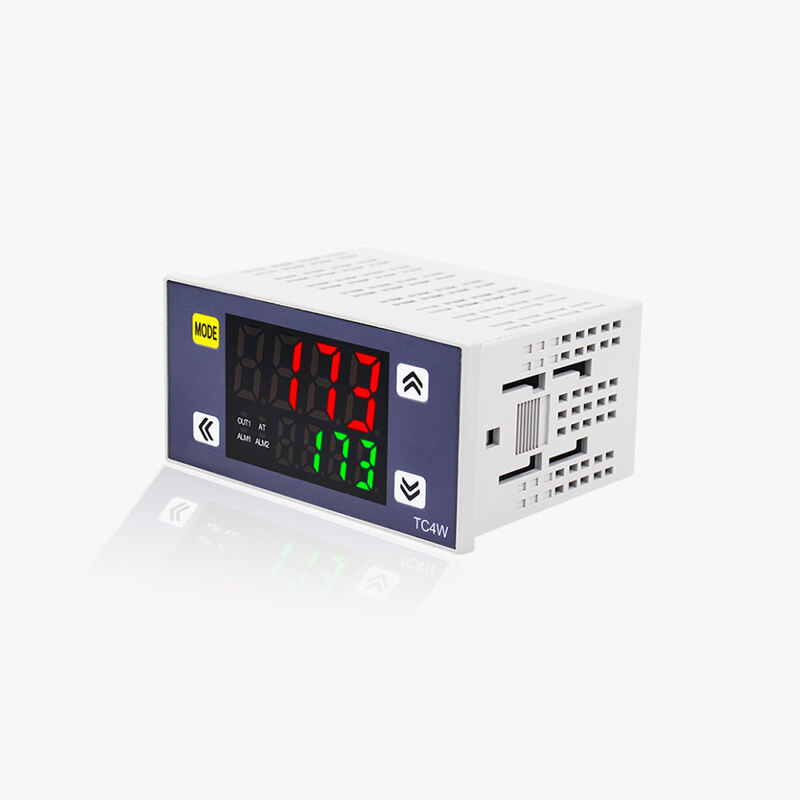Understanding Modern Temperature Control Systems
Temperature controllers have become indispensable components in modern industrial processes, scientific research, and manufacturing applications. As technology continues to evolve, the choice between digital and PID temperature controllers has become increasingly significant for engineers and facility managers seeking precise thermal management solutions. Each type offers distinct advantages and operational characteristics that can significantly impact system performance and process outcomes.
Digital Temperature Controllers: Core Features and Capabilities
Operating Principles of Digital Controllers
Digital temperature controllers represent the latest evolution in thermal management technology. These controllers utilize microprocessor-based systems to convert analog temperature signals into digital format for processing. The digital architecture allows for precise temperature readings and control through built-in algorithms that continuously monitor and adjust heating or cooling outputs. Modern digital controllers often feature LED displays, touch-sensitive interfaces, and multiple input/output options for enhanced operational flexibility.
Advanced Features and Integration Options
One of the standout characteristics of digital temperature controllers is their extensive feature set. These devices typically offer data logging capabilities, remote monitoring options, and network connectivity for integration with broader control systems. The ability to store multiple temperature profiles, implement custom control algorithms, and provide detailed performance analytics makes digital controllers particularly valuable in complex industrial applications.
Digital controllers excel in applications requiring multiple control zones, cascade control, or integration with supervisory control systems. Their programmable nature allows for easy firmware updates and feature expansions, ensuring longevity and adaptability as process requirements evolve.

PID Temperature Controllers: Engineering Excellence
Fundamental PID Control Mechanisms
PID temperature controllers implement sophisticated control algorithms based on proportional, integral, and derivative calculations. This three-term control approach enables highly accurate temperature regulation by continuously adjusting output power based on the difference between desired and actual temperature values. The proportional term provides immediate response to temperature deviations, while the integral term eliminates steady-state errors and the derivative term anticipates future changes based on the rate of temperature change.
Auto-tuning and Optimization Capabilities
Modern PID temperature controllers feature advanced auto-tuning capabilities that automatically optimize control parameters for specific applications. This self-learning functionality significantly reduces setup time and ensures optimal performance across varying operating conditions. The controllers can adapt to changes in thermal load, environmental conditions, and process requirements, maintaining precise temperature control even in challenging applications.
Performance Analysis and System Selection
Response Time and Control Accuracy
When comparing digital and PID temperature controllers, response time and control accuracy emerge as critical performance metrics. Digital controllers typically offer faster initial response times due to their microprocessor-based architecture, while PID controllers excel in maintaining stable long-term temperature control with minimal overshoot. The choice between the two often depends on specific application requirements, such as the thermal mass of the system, required temperature stability, and acceptable temperature deviation ranges.
Cost-Benefit Considerations
The investment decision between digital and PID temperature controllers extends beyond initial purchase price. Digital controllers often command higher upfront costs but offer extensive features and future expandability. PID controllers, while potentially more economical initially, provide exceptional value through their reliable performance and proven control methodology. Organizations must consider factors such as maintenance requirements, operator training needs, and long-term scalability when making their selection.
Application-Specific Considerations
Industrial Process Requirements
Different industrial processes demand varying levels of temperature control precision and feature sets. High-temperature manufacturing processes, such as metal heat treatment or glass production, often benefit from PID controllers' robust control algorithms and stability. Meanwhile, applications requiring data logging, remote monitoring, or integration with factory automation systems may find digital controllers more suitable due to their advanced connectivity options and programmable features.
Environmental and Operating Conditions
Environmental factors play a crucial role in controller selection. Digital controllers may require additional protection in harsh industrial environments, while PID controllers often demonstrate superior resilience to electromagnetic interference and temperature extremes. Understanding the operating environment, including ambient temperature ranges, humidity levels, and potential electromagnetic interference sources, is essential for making an informed choice.
Future Trends and Technology Evolution
Smart Manufacturing Integration
The future of temperature controllers is increasingly aligned with Industry 4.0 principles and smart manufacturing initiatives. Digital controllers are leading the way in IoT integration, offering enhanced connectivity options and data analytics capabilities. However, PID controllers are also evolving, with manufacturers incorporating smart features while maintaining their core strength in precise temperature control.
Emerging Technologies and Capabilities
Both digital and PID temperature controllers continue to benefit from technological advancements. Artificial intelligence and machine learning algorithms are being integrated into digital controllers, enabling predictive maintenance and optimized performance. Meanwhile, PID controllers are seeing improvements in their auto-tuning capabilities and user interfaces, making them more accessible to operators while maintaining their renowned reliability.
Frequently Asked Questions
What makes PID controllers particularly effective for temperature control?
PID controllers excel in temperature control applications due to their three-term control algorithm that provides precise, stable, and responsive temperature regulation. The combination of proportional, integral, and derivative control actions allows these controllers to maintain accurate temperature control while minimizing overshoot and settling time.
How do digital controllers handle multiple temperature zones?
Digital controllers manage multiple temperature zones through advanced microprocessor-based systems that can process multiple inputs and outputs simultaneously. They often feature dedicated control algorithms for each zone, along with communication capabilities that enable coordinated control across the entire system.
Can digital and PID controllers be integrated into existing systems?
Both digital and PID temperature controllers offer various integration options for existing systems. Digital controllers typically provide multiple communication protocols and interfaces for seamless integration with modern control systems. PID controllers, while traditionally standalone devices, now often include digital communication capabilities for system integration while maintaining their robust control performance.
Table of Contents
- Understanding Modern Temperature Control Systems
- Digital Temperature Controllers: Core Features and Capabilities
- PID Temperature Controllers: Engineering Excellence
- Performance Analysis and System Selection
- Application-Specific Considerations
- Future Trends and Technology Evolution
- Frequently Asked Questions

